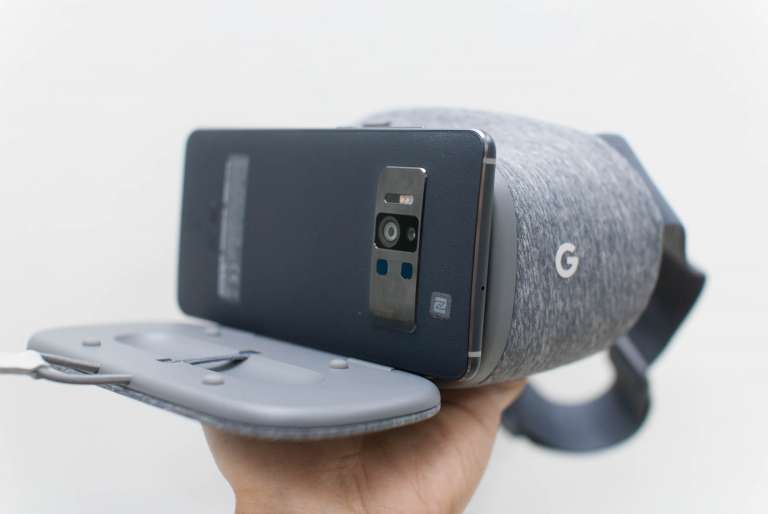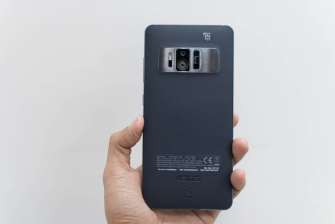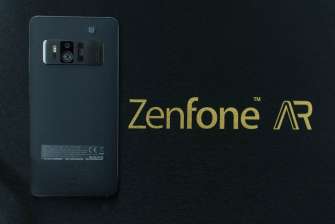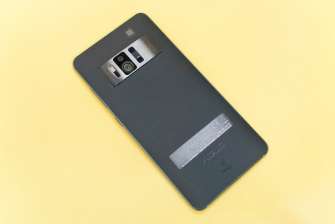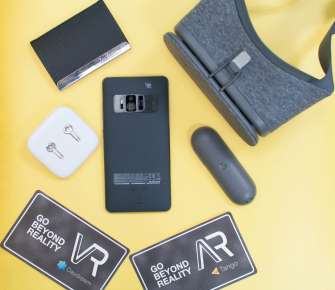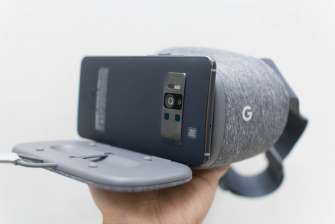ASUS developed the Zenfone AR as its first entry in the augmented reality consumer space.
Design and spec-wise, it is close to the Zenfone 3 Deluxe which was introduced last year. There are, however, several changes and enhancements that were made in order to support Google Tango and Google Daydream.
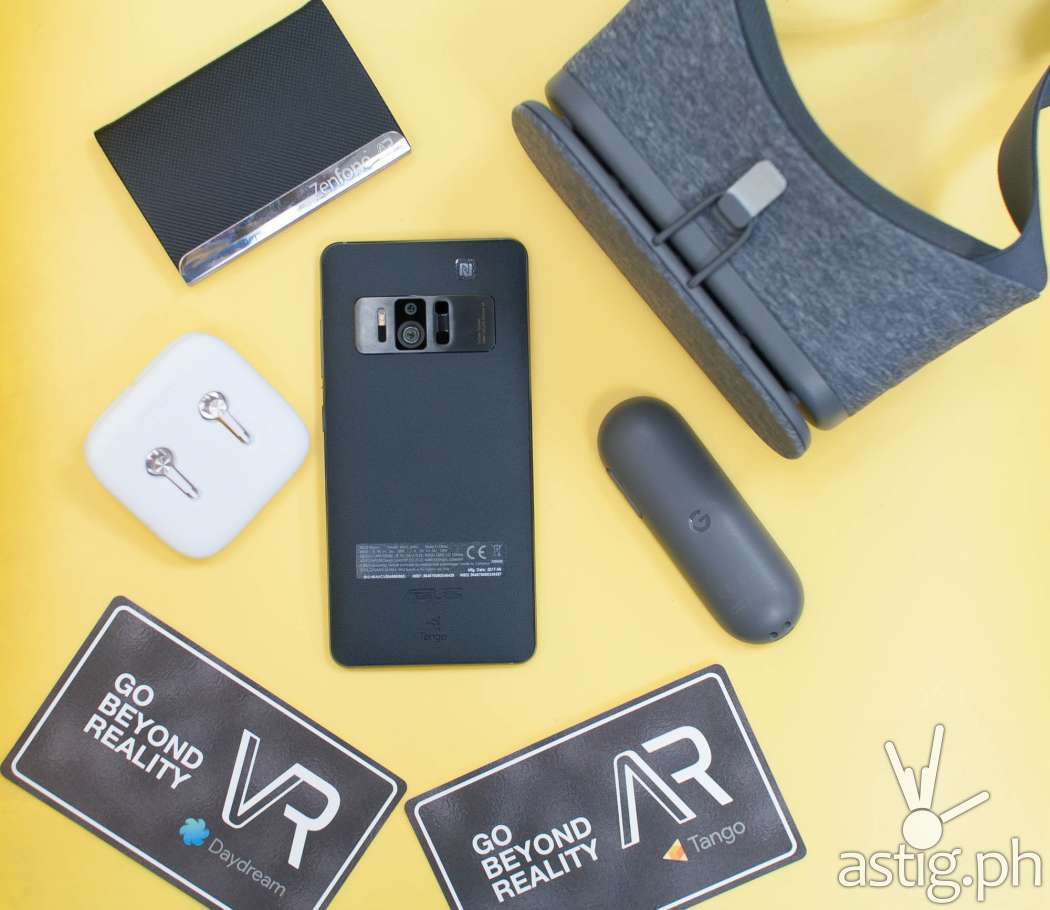
Tango is Google’s augmented reality (AR) platform, while Daydream is Google’s virtual reality (VR) platform for use with Google Daydream View, a virtual reality headset and controller system announced in 2016.
It was initially designed to be compatible with Google Pixel, but support has now been expanded to include other Android Nougat devices. So far, there are only two: the Lenovo Phab 2 Pro and the ASUS Zenfone VR.
So, let’s break things down and see what this phone has to offer.
Display: 5.7-inch WQHD Super AMOLED screen
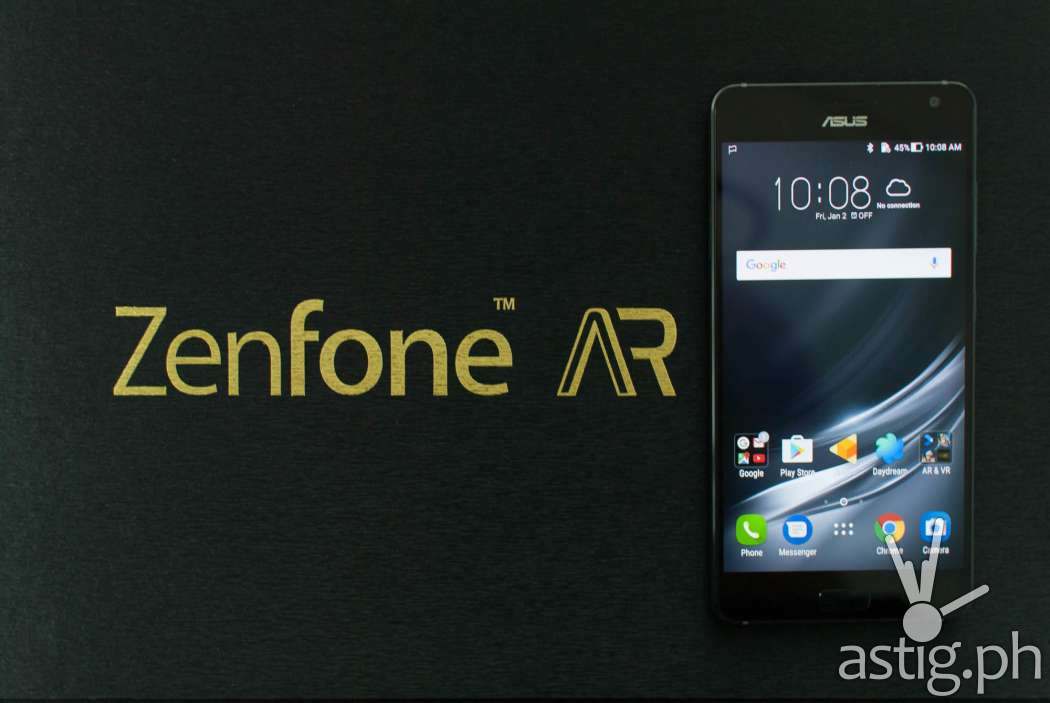
The Zenfone AR touts a 5.7-inch Super AMOLED screen with Gorilla Glass 4.
The design is similar to the Zenfone 3 line, with thin bezels on the side and thick bezels at the top and bottom, resulting in a screen-to-body ratio of 79%.
It is nice to see ASUS finally break out of the 1920 x 1080 pixel resolution, this time going for 2560 x 1440 WQHD. The increased pixel density is important for VR since these small pixels become increasingly visible when magnified through a headset.
Looking at the Zenfone AR through Google Daydream View, WQHD still does not cut it. The pixels are still very noticeable, and the Adreno 530 GPU already struggles from time to time when rendering graphically heavy scenes with multiple layers of post-processing filters.
From a distance, the WQHD Super AMOLED screen is gorgeous, as it should be if you plan to stare at this screen through Daydream View or Google Cardboard.
Storage: up to 8GB LPDDR4 RAM
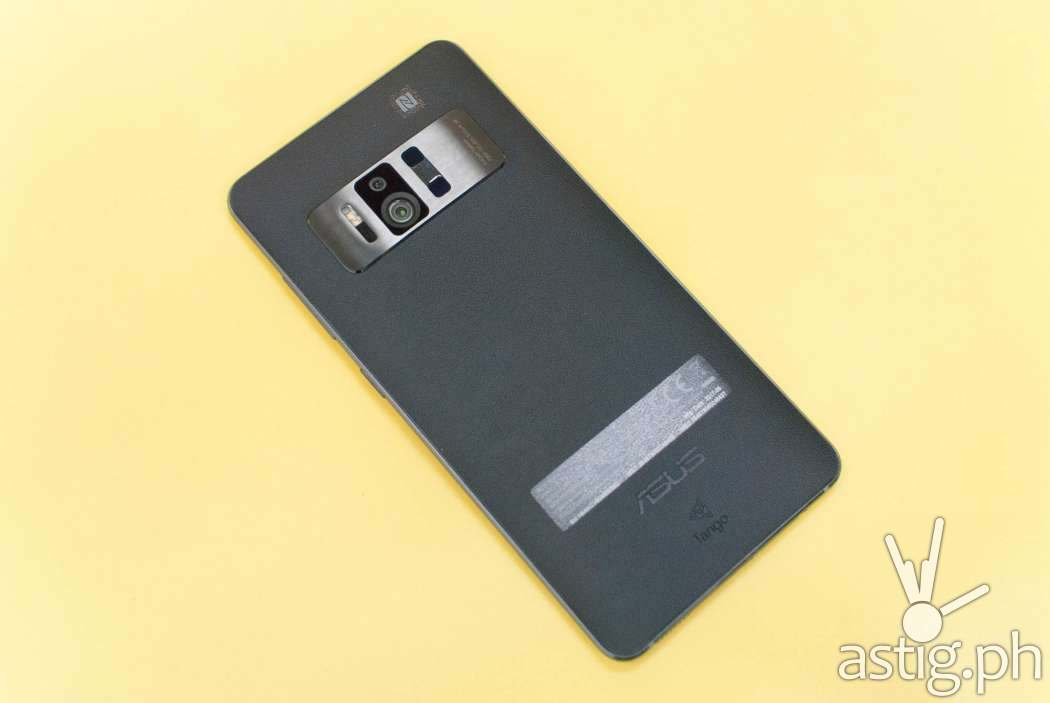
Zenfone AR comes with either 6GB or 8GB of LPDDR4 memory. LPDDR4 is the latest standard for mobile DDR. Theoretically, it is capable of up to 3,200 Mb/s which is twice the 1,600 theoretical rate for LPDDR3.
The AR uses UFS 2.0 technology for its internal storage. Although UFS 2.1 is out, both UFS 2.0 and UFS 2.1 are theoretically capable of delivering up to 1,200 Mb/s.
Since there are both the latest technologies, storage and memory benchmark results for the AR should be close to the top.
Those moving from older devices should also see improvements in loading times, especially with texture-heavy 3D games.
Performance: Snapdragon 821
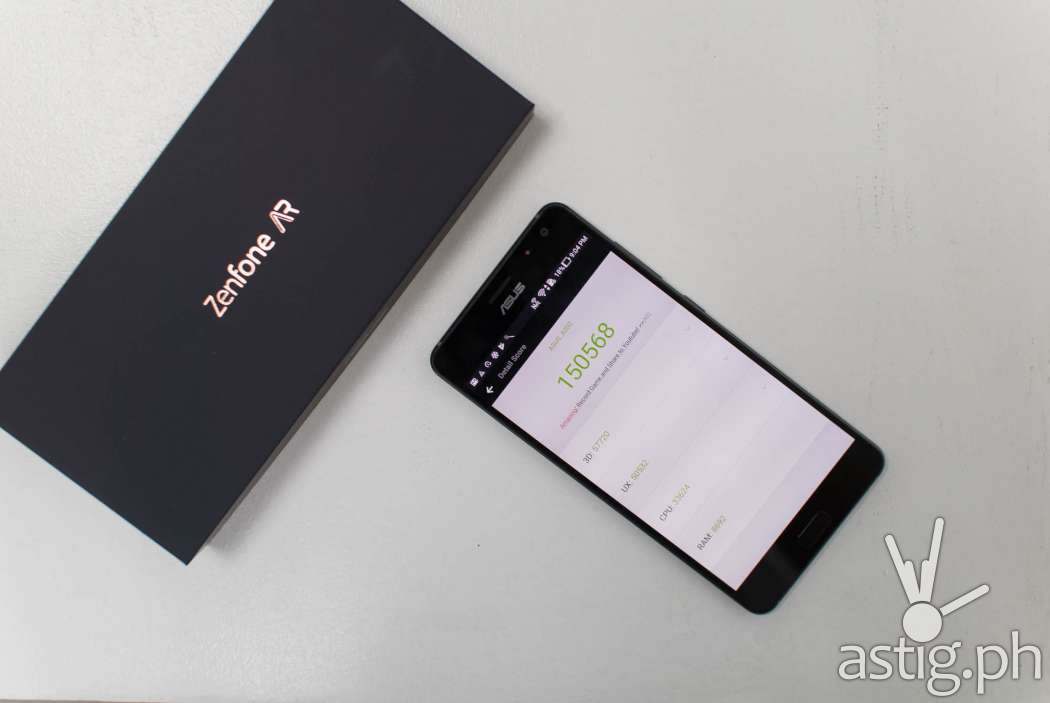
Similar to the Zenfone 3 Deluxe, the Zenfone AR is powered by Qualcomm’s Snapdragon 821 SoC (system on a chip), which includes a quad-core Kryo processor (2 x 1.6 GHz and 2 x 2.3 GHz) and an Adreno 530 GPU.
Nothing too spectacular here and this showed through our benchmarks. As expected, the numbers were on par with last year’s flagships. The phone heats up quite a bit when running hardware-intensive apps such as AR and VR.
Zenfone AR benchmark results:
- Geekbench single-core score: 1819
- Geekbench multi-core score: 4047
- Antutu benchmark result: 150568
Zenfone AR gaming demo: NBA 2K17 at the highest settings
Battery: 3300 mAh Quick Charge 3.0
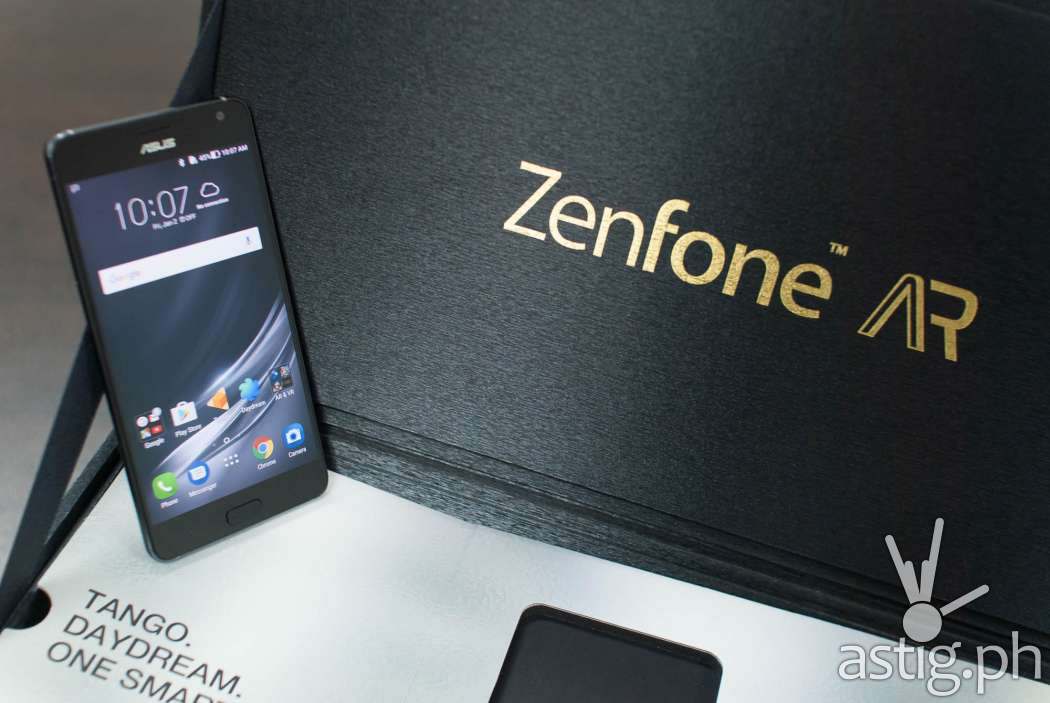
Battery life is very important for hardware-intensive operations such as AR and VR. AR activates both the screen and the rear camera, which sucks up battery life like a vacuum cleaner on a Sunday.
We need to spend more time with the Zenfone AR to give a proper assessment, and this all depends on one’s usage, but so far the experience has been underwhelming.
The Zenfone AR supports Quick Charge 3.0 though, so it only takes a few minutes to bring things back online – as long as you have a USB type-C cable and a power bank or an outlet within the area.
Camera: 23MP rear camera with TriCam motion tracking system

The first thing you will notice about the AR is the huge camera hump at the back. This is the TriCam System, a module used to deliver Tango’s augmented-reality experience.
Apparently, TriCam is a proprietary system developed by ASUS which combines a 23-Megapixel camera, a motion-tracking camera, and a depth-sensing camera.
The Zenfone AR Tango experience has been interesting so far. Tracking and spatial location work most of the time, and it’s amazing when it does.
There are a few times when objects appear misaligned on the AR app Holo, though it is possibly due to software rather than hardware.
Check out the demo video here:
Here is another video showing the phone itself:
The RAW file format is (finally) supported according to the official website, however, we could not find this in the camera settings. We will need to spend more time with the Zenfone AR to figure out how to enable this option.
The AR’s 8-Megapixel front-facing camera is nothing fancy in comparison, though it does come with LED flash.
Notable features: fingerprint sensor, DTS audio support, NFC
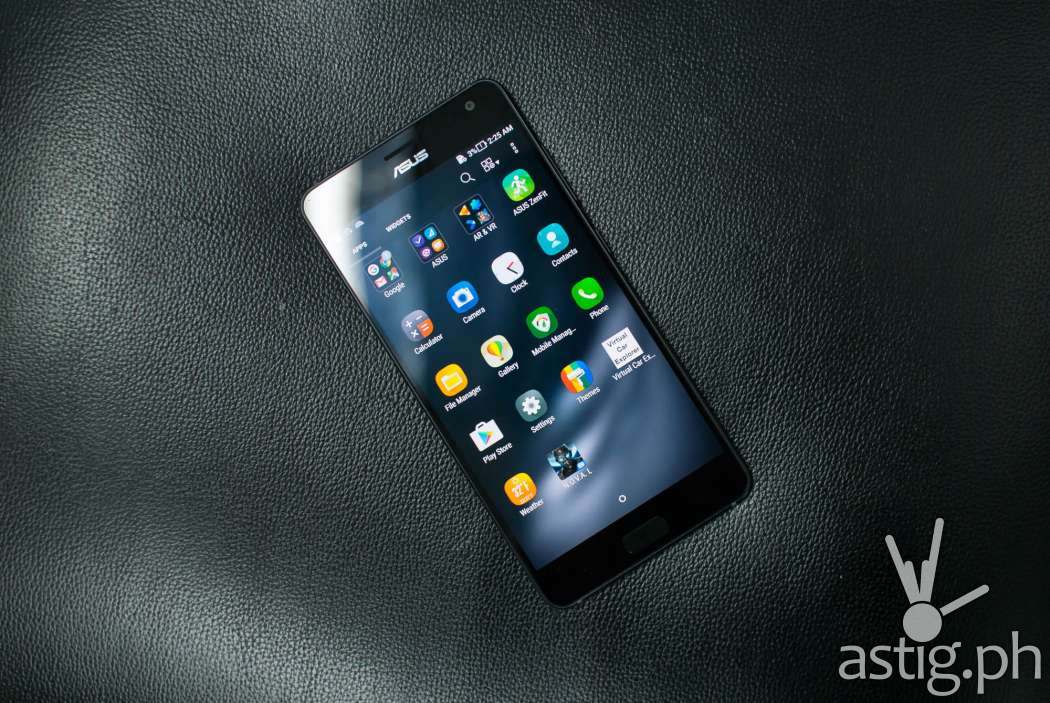
Just a few more things before we go: the Zenfone AR comes with a fingerprint sensor mounted on the home button, a first for ASUS’ Zenfone product line.
DTS Headphone:X, a surround sound feature that we first saw (or heard) on the Zenfone 3 Ultra, makes it to the Zenfone AR. This improves in delivering localized sound over headsets, which is important in the VR experience.
Audio is often neglected in smartphones, and we are happy to see this well-thought addition to the Zenfone AR.
Oh yeah, NFC is back from the dead. It is being used to communicate with Google Daydream View and pair over Bluetooth. So far the experience has been seamless.
Price and availability in the Philippines
ASUS Philippines won’t be announcing the local retail price until Sunday, so we will make sure to update you when that time comes. Based on the Taiwan and India prices, we expect the Zenfone AR to be priced at over Php 60K+.
We’ll just go back to Daydream-ing, then.
ASUS Zenfone AR (ZS571KL) specs
- Display: 5.7 inches 1440 x 2560 pixels with Gorilla Glass 4
- SIM: Dual SIM (Nano-SIM, second SIM functions as microSD slot)
- OS: Android 7.0 (Nougat)
- CPU: Quad-core (2×2.35 GHz Kryo + 2×1.6GHz Kryo)
- GPU: Adreno 530
- Memory: 6GB / 8GB
- Storage: 6G / 128GB / 256GB
- Expansion: microSD up to 2TB
- Front camera: 8MP f/2.0 with dual-LED flash and RAW support
- Rear camera: 23MP f/2.0 with 4-axis OIS
- Battery: 3300 mAh (non-removable) with Quick Charge 3.0 via USB Type-C 2.0


